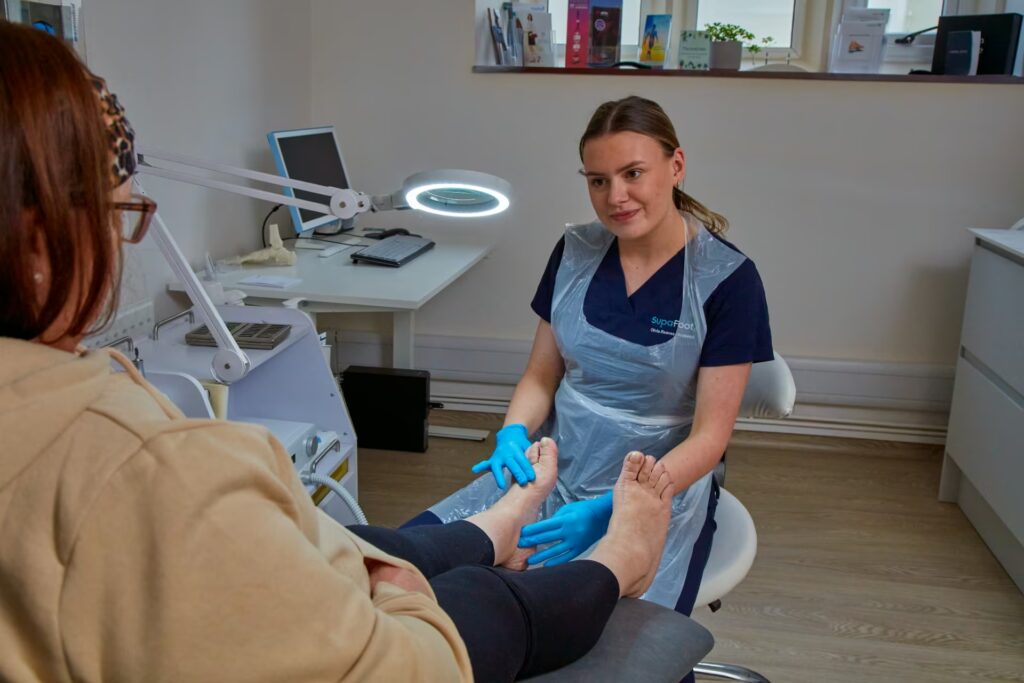
Diabetes
Diabetes is a condition where the body either doesn’t produce enough insulin or can’t use it properly, leading to high blood sugar levels. Over time, this can affect various parts of the body, including the feet.
Diabetes can cause nerve damage (diabetic neuropathy), leading to numbness, tingling, or loss of feeling in the feet. This means injuries like cuts or blisters might go unnoticed, increasing the risk of infections. Diabetes can also reduce blood flow to the feet, slowing down healing and raising the risk of more serious problems, such as ulcers or, in severe cases, amputation.
Regular foot care is essential. A podiatrist can help by providing routine foot checks, offering advice on proper footwear, and treating any issues early to prevent complications.
Book yourself an assessment with one of our podiatrists and we will be happy to help!